The ability to separate the sounds of a word is called “phoneme segmentation”. It’s a critical skill in both learning to read and write. By six and a half/seven years of age students should be able to tell you the sounds in a word. So, for example, if given the word “cat”, the student should be able to you that the sounds in “cat” are /k/ /a/ /t/. Understanding that words are made up of separate speech sounds is an important foundational skill. Phoneme segmentation is considered a “phonemic awareness” skill which falls under the broader category of “phonological” skills. If you’d like to see the developmental sequence of these skills, just download the free handout below.
Just click the following link to download this handout Developmental Stages of Phonemic Awareness
Around the end of kindergarten/beginning of first grade we should be directly teaching students to segment words into their separate speech sounds. As it is when teaching any skill, it’s important to scaffold our instruction and provide clear and concise directions (explicit teaching). When introducing the skill, we often begin with words containing 2 and 3 phonemes. Adding a hands-on component is also very helpful. I like to use the Breaking Up Words activity when first introducing the skill. This activity has a 1-1 correspondence between the sounds in the word and the dots on the card. So, in this example, the student will touch a circle for each sound (/d/ touch circle, /u/ touch circle, /k/ touch circle) and then blend the word back while moving his finger along the green line (“duck”).
The Breaking Up Words activity can be found in my online Teachers Pay Teachers store or through the Make, Take & Teach website. This activity is also one of 11 hands-on activities contained in the Phonemic Awareness Activity Pack.
Once the students become proficient with activities containing a 1-1 correspondence, we move a bit up in difficulty. In the Squaring Up activity students are give 4 plastic tiles and then pictures of 2-, 3- and 4- phoneme words. They are to move a tile up for every sound in the word. This takes the 1-1 correspondence component away from the activity making it a little more challenging. Although the picture of “snail” has 4 sounds, it would work the same if the picture had 2 (bow) or 3 (cat) sounds. So if the picture was “cat”, there would be 4 tiles and the student moves a tile for each sound (/k/ move tile, /a/ move tile, /t/ move tile). There will then be one tile left below.
The Squaring Up activity can also be found in my online TpT store or through the Make, Take & Teach website. It is also one of the activities contained within the Phonemic Awareness Activity Pack.
The Say It- Move It activity is much like the Squaring Up activity as there not a 1-1 correspondence. This time, we’ve also eliminated the picture cue. Simply place bingo chips on the dots, provide a word and then have the student move a chip into the square for each sound. He/She can then blend the word while moving a finger along the green line. You can easily use any manipulative for this activity. During the holidays, it’s fun to use holiday themed manipulatives such as mini erasers.
I have to say that the bead slide is one of my all time favorite activities for teaching this skill. It’s super easy to make. I purchase the wooden beads through S&S Worldwide. It’s important that there is some resistance with the shoelace and when the beads slide too easily it just defeats the purpose. The shoelace is just a lace I picked up at Walmart tied at one end and then strung 6 beads to make one slide. I can usually make 3 bead slides with one lace.
For the bead slide activity have your students slide the beads to one side. Provide a word and then have him/her slide a bead for each sound. It’s sometimes difficult to think of words with varying number of sounds so I included a “cheat sheet” in this post. Just click the link below if you’d like to use it.
To download this cheat sheet just click the following link Phoneme Segmentation Cheat Sheet
So once your students are proficient with the bead slide, try just giving them words and have them segment without the use of a manipulative or visual. They are well on their way to mastering this skill!
Phoneme segmentation is one skill addressed in the Big Box of Phonemic Awareness Activities. This kit contains activities and picture cards for teaching 5 phonological/phonemic awareness skills.
The Big Box of Phonemic Awareness Activities is available in my Teachers Pay Teachers store or through the Make, Take & Teach website.
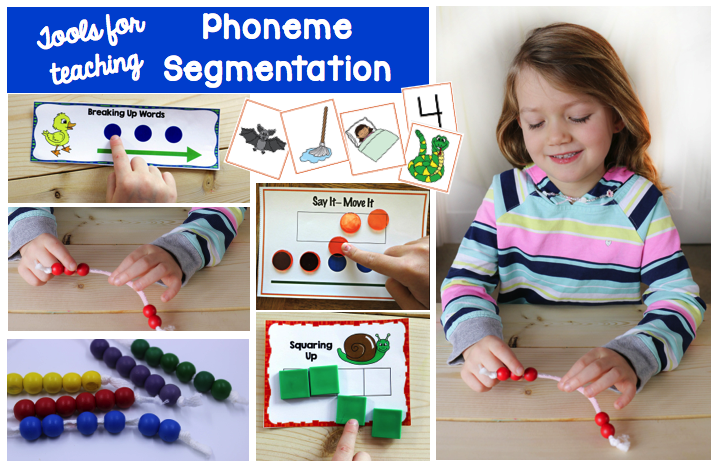
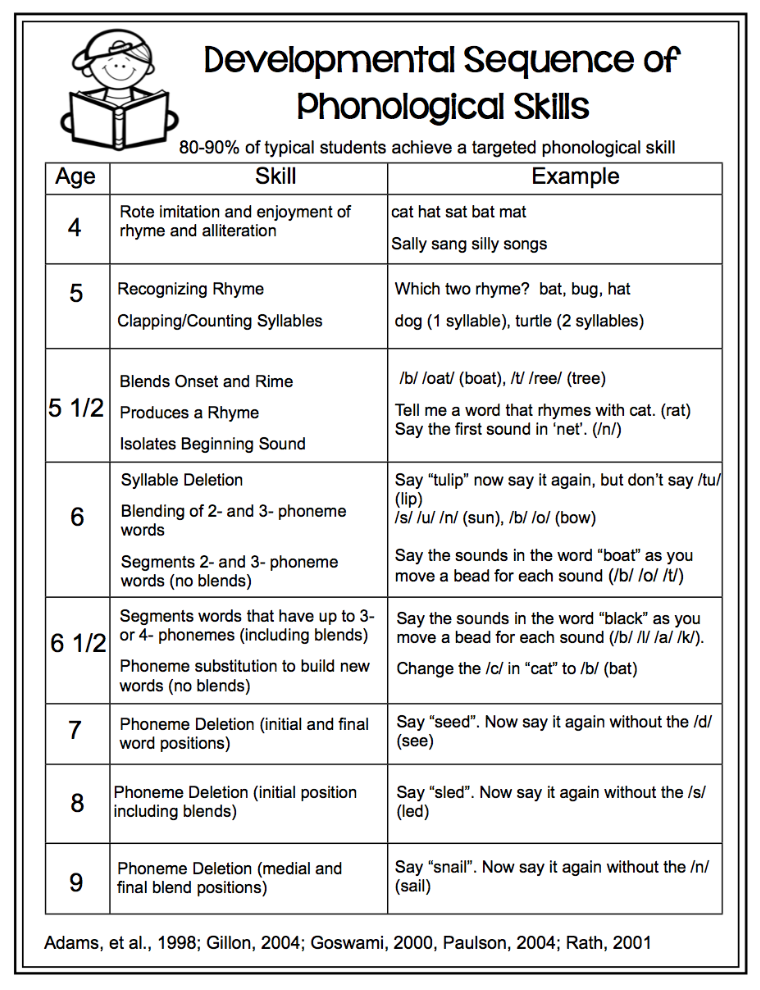
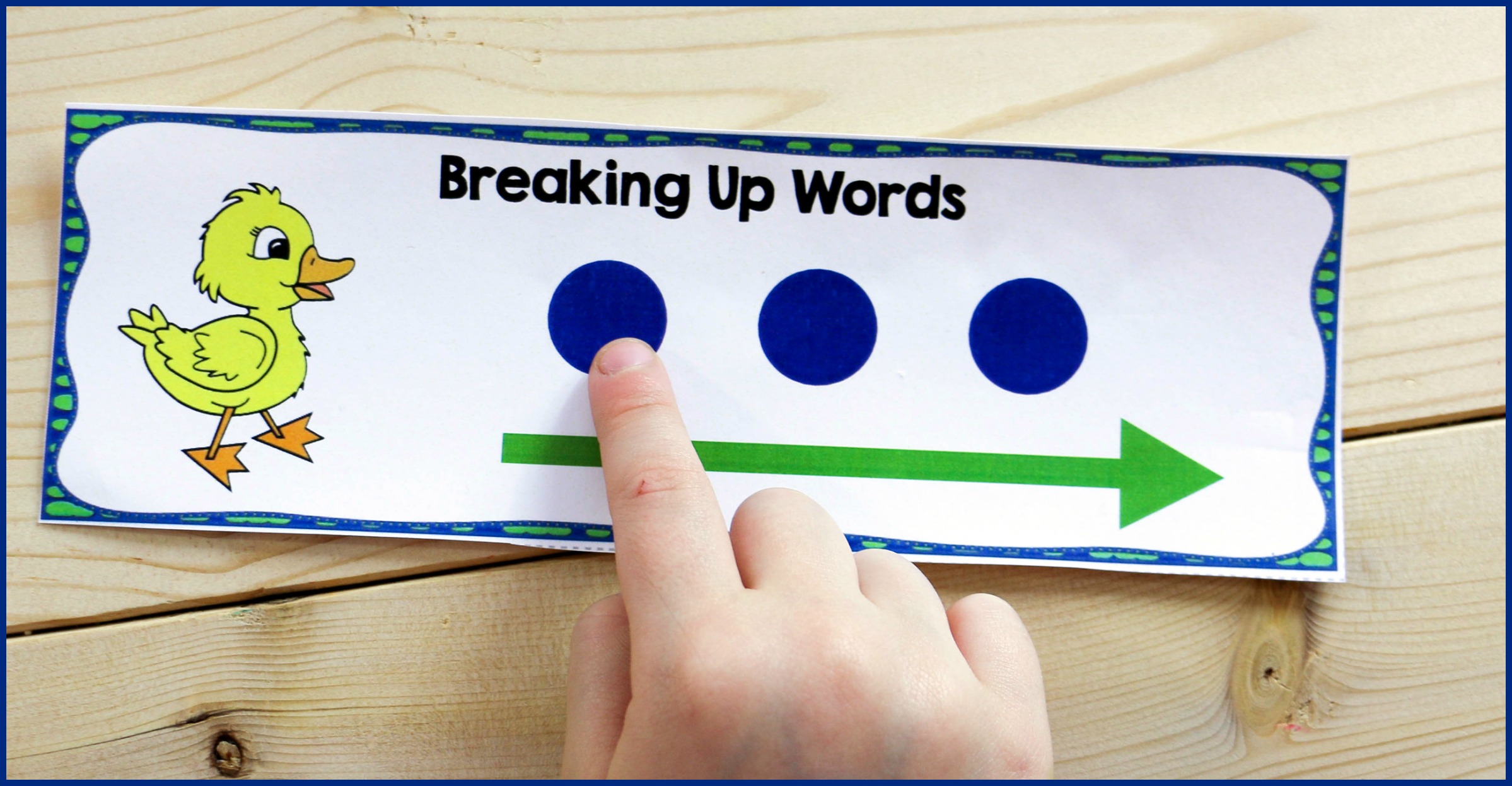
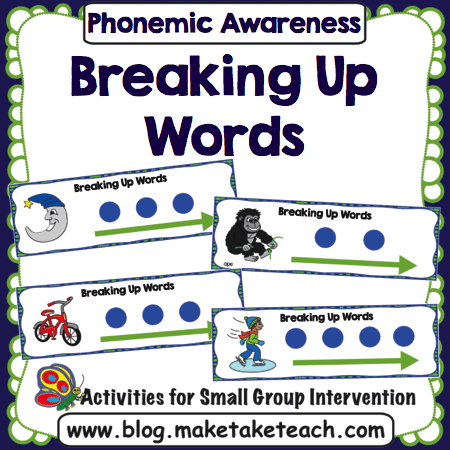
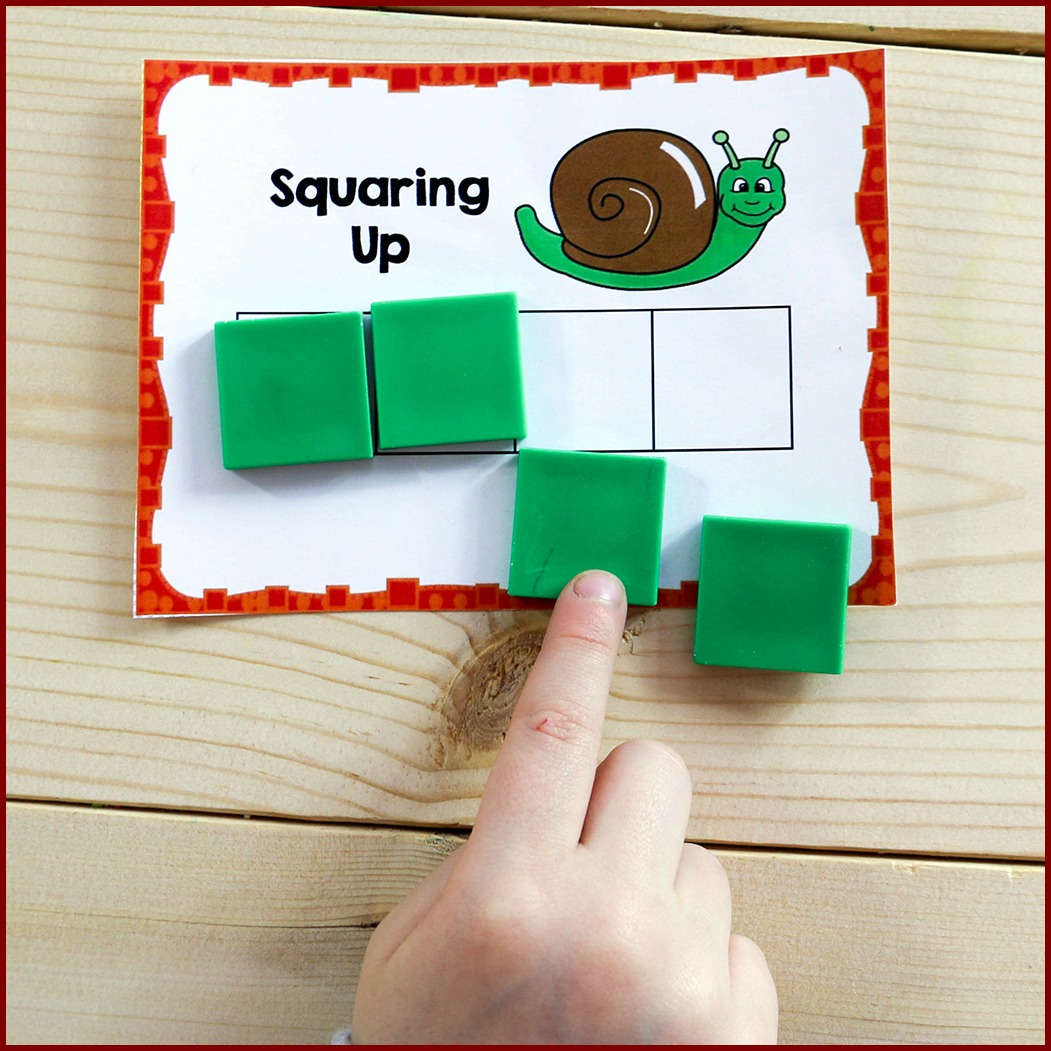
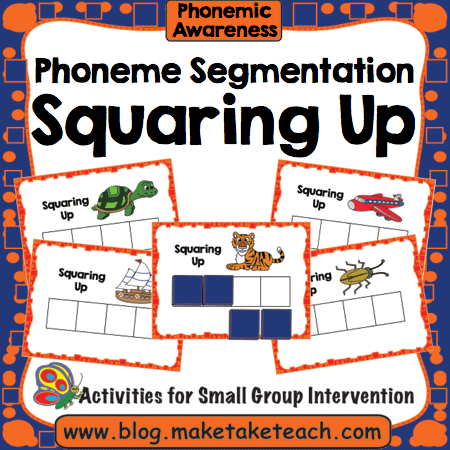
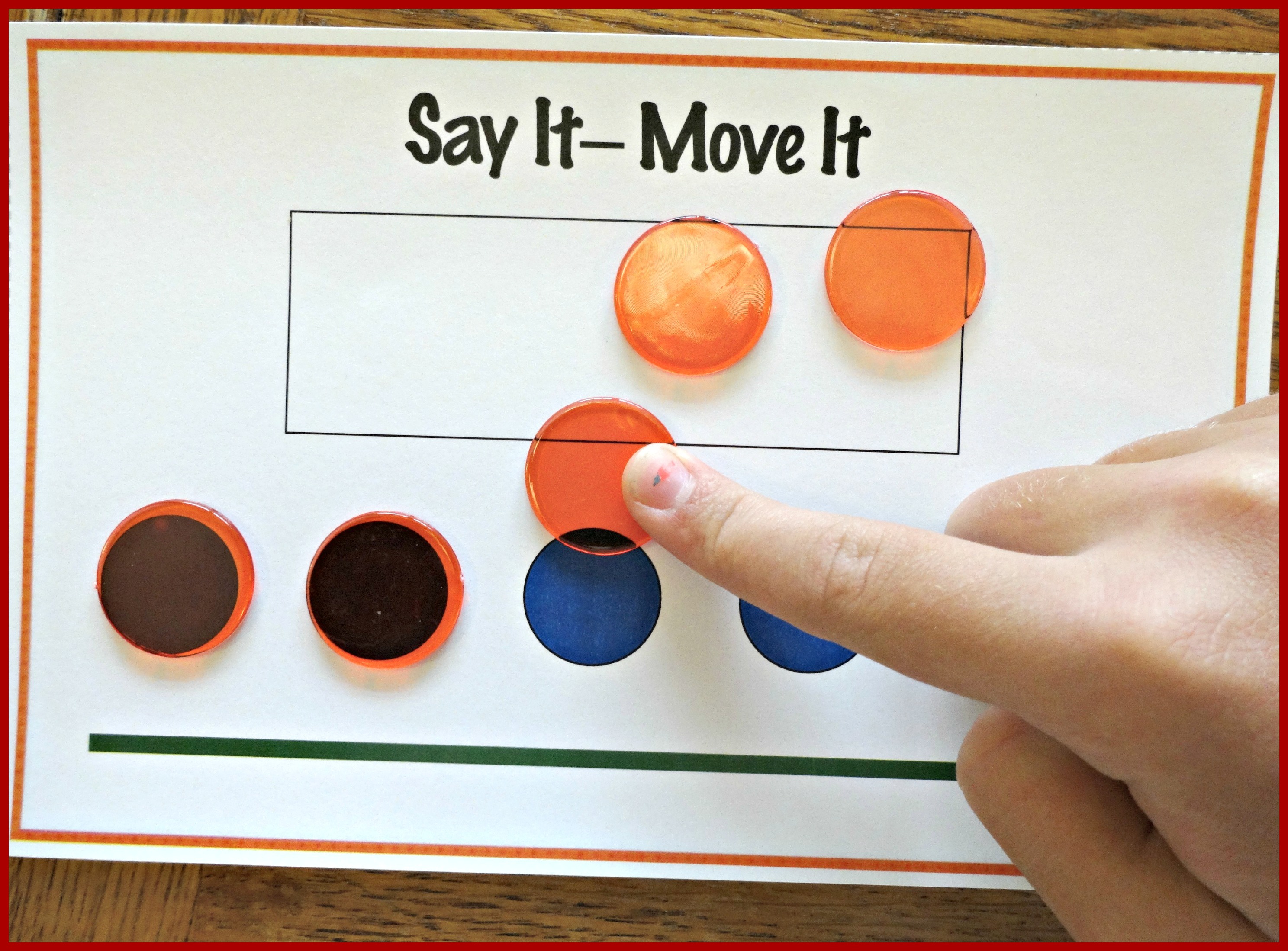
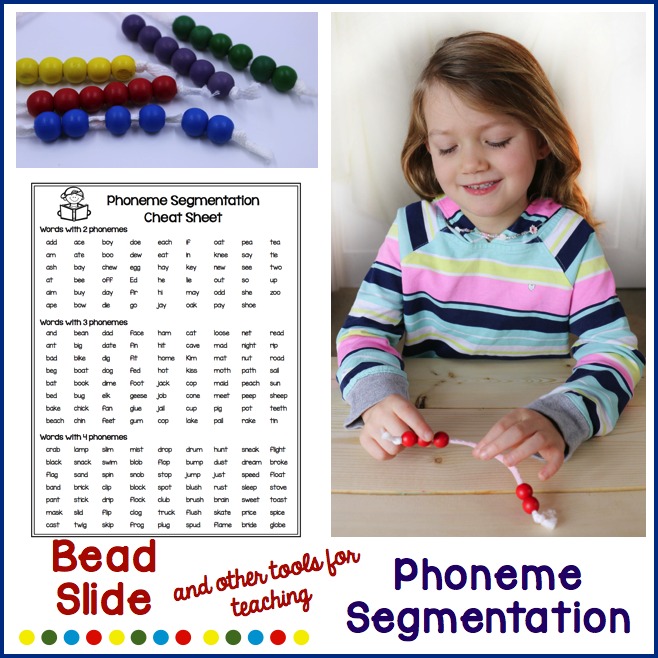
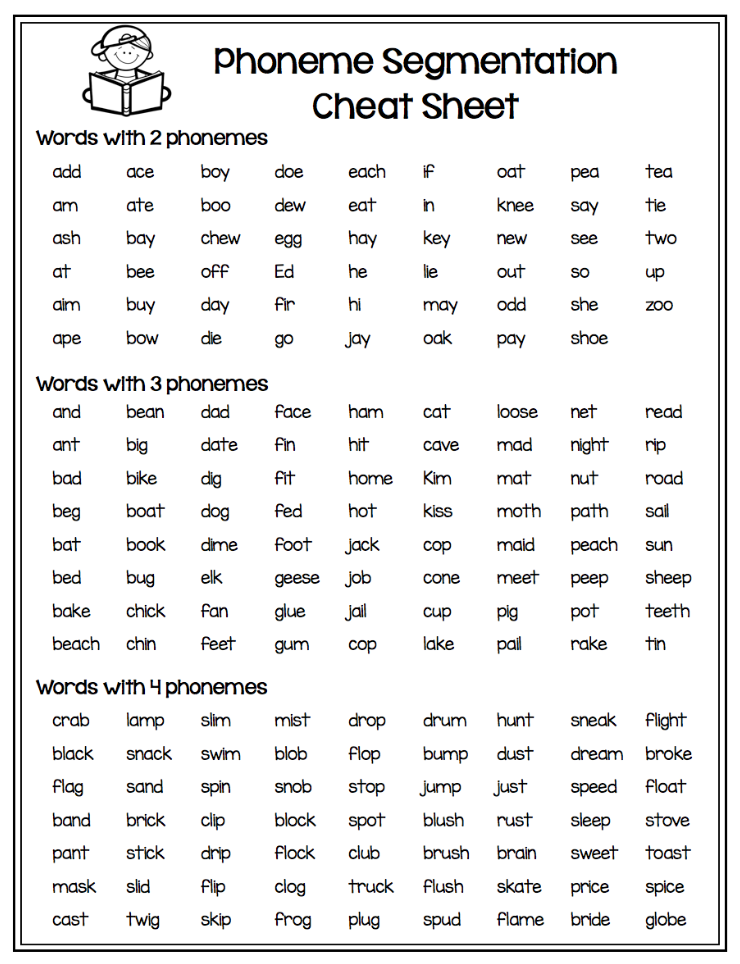
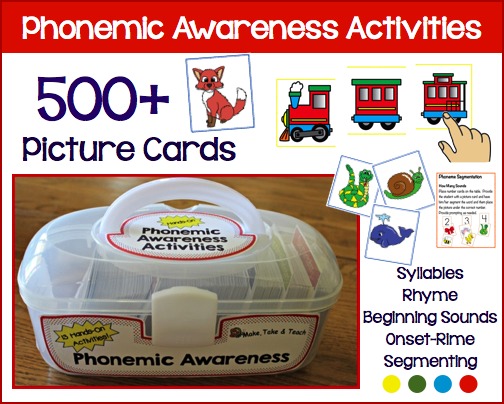
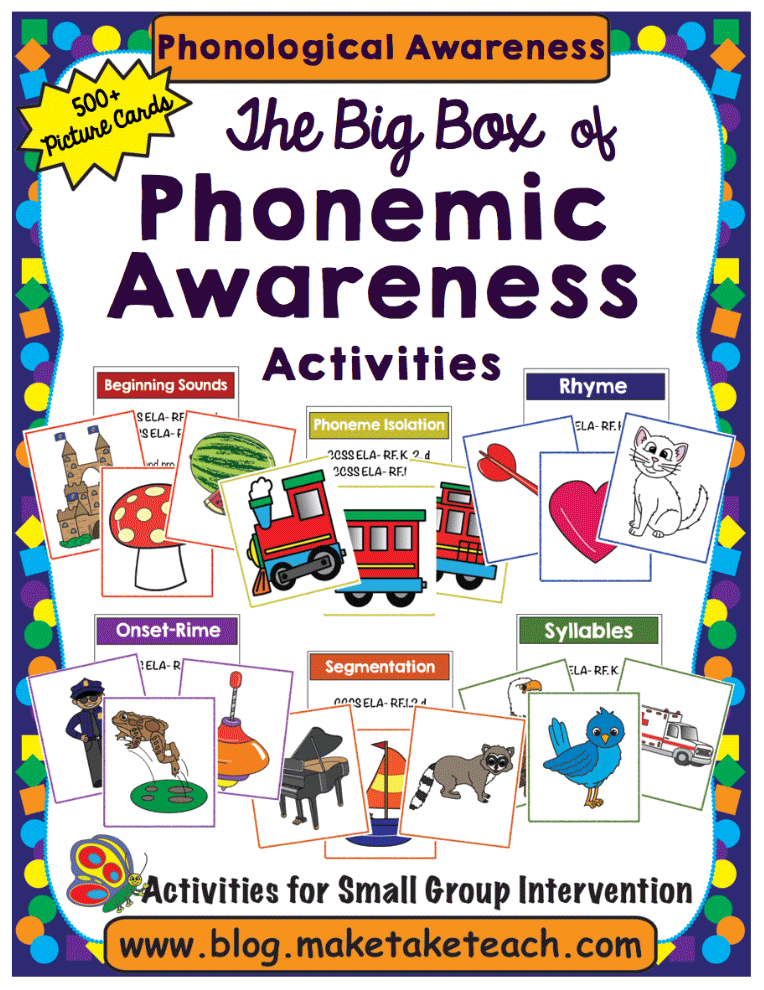



Those are some great activities! So many ways to practice!